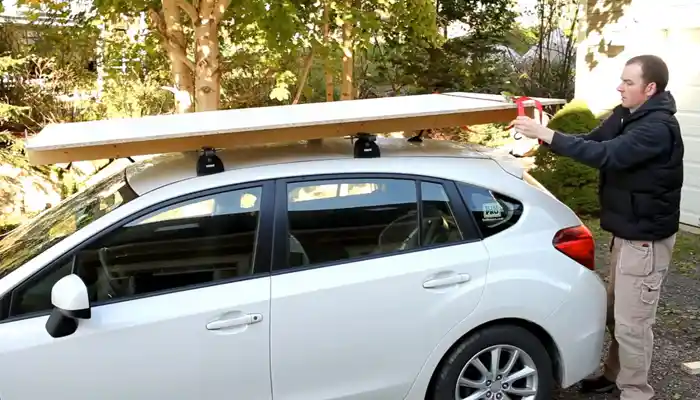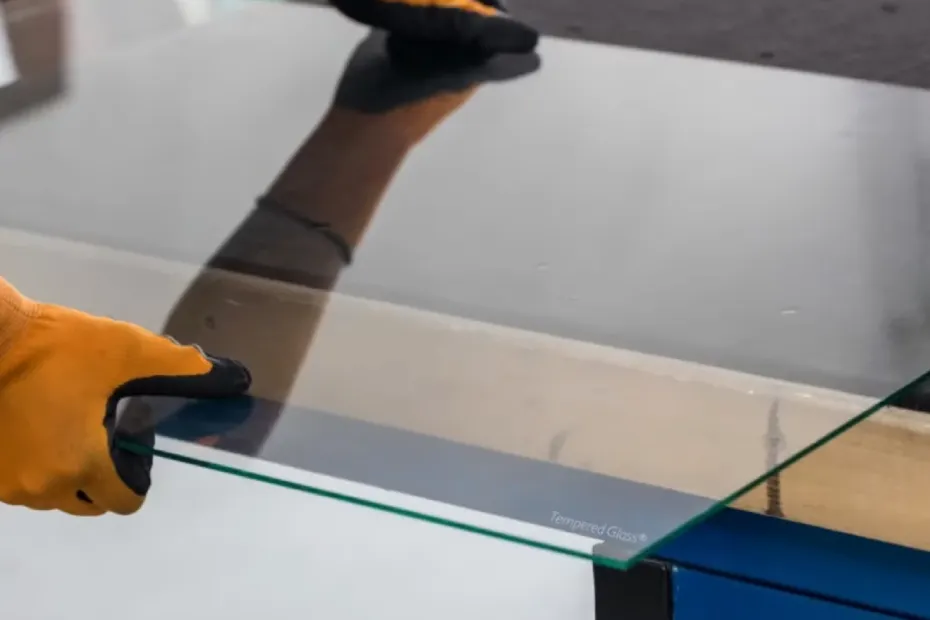WoodenuKnow.com is a participant in the Amazon Services LLC Associates Program, an affiliate advertising program designed to provide a means for sites to earn advertising fees by advertising and linking to Amazon.com and may earn from qualifying purchases.
You want to transport plywood on your roof rack, but you don’t want it to fly off while you’re driving, or rattle around and damage your car. If you don’t use the right kind of ties, your plywood could fall off and cause an accident.
Plywood is a versatile building material that comes in large sheet goods and is used for applications such as roofing or walls of houses, sheds, garages, etc. Therefore, how to tie plywood to roof rack?
We will answer this question by showing you a few steps to tie plywood to the roof rack. Also, you can find a suitable solution for your car type.
10 Simple Steps on How to Tie Plywood to Roof Rack
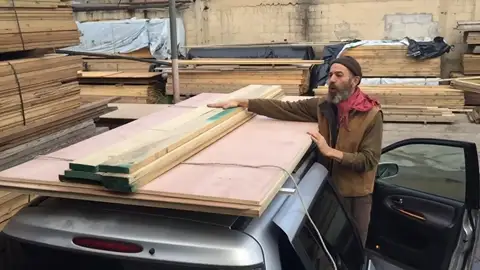
Car roof racks are usually made of metal or heavy-duty plastic tubes, which can be easily bent together to create a big space on the top of your car. In order to transport or store plywood, make sure you have a roof rack first.
Whether you are using rope, bungee cord, or strap with hooks, the process of tying plywood to a roof rack is very simple. We have laid out some easy steps for you here:
Step 01: Measure the Plywood
The first step is to measure the plywood. Make sure your roof rack can accommodate its size. Usually, it’s better for you to straps or ties wood into two pieces instead of one long piece.
You can also measure the size of space on your roof rails. Check safety guidelines for your car model, whether you can straps or tie wood on.
Step 02: Measure the Ties
After measuring the wood from home depot, you need a rope or a strap that is longer than it. If your roof rack design allows, you can also have two pieces of rope that are the same length as the wood instead of just one long rope.
However, make sure you buy strong tie material with durable stitching for business new. Don’t use ropes with metal to tie plywood. Straps are likely to be more durable.
Step 03: Load your Plywood
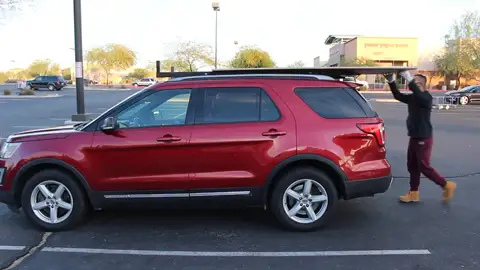
After the plywood has been piled into two pieces, you can load them onto your roof rack by first laying each piece of plywood on top of one another. Attach the rope or straps to both pieces and then carry them to the car, pickup truck, or cargo carefully.
Set them down on top of racks and pull ropes/straps down tightly. Make sure it’s not too much weight for your roof rack to hold.
Step 04: Create the Loops
Now that you have a rope or strap, it’s time to make loops on each end of them that will go around the wood. Start by creating a figure 8 loop on one end of the rope/strap and a simple loop on the other.
You can use fire ropes shackle to create a loop and it will be helpful for you if you need to remove the ropes or straps in the future.
Step 05: Attach Loops to Wood
After making these loops, it’s time to attach each one of them to wood by placing the figure 8 loop around a corner of the plywood sheet and then threading the ropes or straps through the simple loop.
Then use ropes or straps shackle to lock rope to wood. Pull them tight, but not too tight as the wood will buckle under pressure.
Step 06: Add More Ropes or Straps
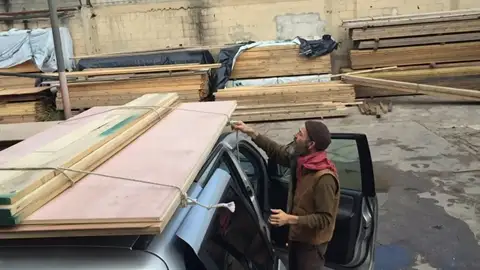
You should add more ropes or straps to your plywood to make sure the wood is tied firmly and tightly. If you drive on bumpy terrain, it’s likely that these ropes will loosen and it would be dangerous if any piece of wood falls off.
So, use at least two ropes to tie plywood to the roof rack. These ropes should be attached to the middle of multiple sheets, not at the ends.
Step 07: Make Sure it’s Tight
Once you place ropes or straps it onto your roof rack, make sure it’s attached firmly and tightly to the roof rack. Check the end attachment and then check ropes or straps themselves for tightness.
You can also drive a few miles and if the ropes or straps have loosened, pull it tighter again by pulling on the end loops. If ropes or straps are not tightened enough, straps may slide off eventually when driving on bumpy terrain or
Step 08: Check the Wood
Now to be absolutely sure that your wood is tied securely and tightly, check it before you drive. Make sure there are no ropes or straps that have loosened themselves to the point where plywood could come off.
If any piece of wood for your business directory is not tied down or strapped securely, tighten it with other ropes or straps.
Step 09: Secure Wooden Ends
When straps plywood to a roof rack, it can get loose and hang over the ends. This is not only dangerous but also bad for your car at the same time. To solve this problem, you can strap down both ends.
Also, if possible, whip down plywood in the middle of two ends. It can help to secure it well.
Step 10: Drive Carefully
Now, you’re all set with straps plywood on your roof rack. You can drive carefully to the place you are going without any distractions. With these steps in mind, strapping or tying wood onto a roof rack is really easy and safe if you straps right.
Remember, always straps or tie down your plywood securely to prevent damage before driving on a trip.
Materials for Tying Plywood to Roof Rack
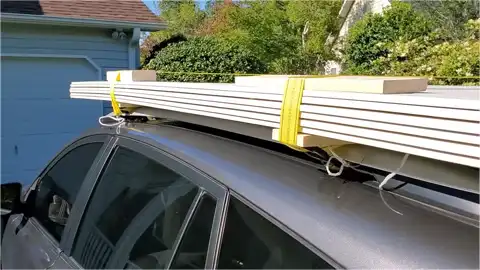
There are a few different things you can use to tie plywood to the roof rack:
Rope
The rope is a common choice for tying plywood to the roof rack. Ropes are fairly flexible, so you can use them on most standard roof racks.
However, ropes might not be as safe as some other options because they don’t have a solid connection point with a secure locking mechanism, and it’s easier for someone to steal the whole thing by cutting the rope.
Ropes are also not as sturdy as straps, so they should only be used if there is no better option available.
Bungee Cord
You can use bungee cords to strap the plywood down, but you should check first that your car’s roof rack can support the weight of the wood and all of these attachments before you start the process of tying down.
Bungee cords are also a temporary measure, so you’ll have to use them alongside other more permanent strapping mechanisms if possible.
Straps with Hooks
You can use a piece of string with a hook on one end as an alternative to using thread or bungee cord. This is a more secure option than just using a bungee cord because it has a solid connection point.
But, the same rules apply as with any other straps or ties. Make sure your car can handle the weight and check it periodically as you drive.
Webbed Ratcheting Straps
Webbed ratcheting straps are a good option for a stronger attachment to the roof rack.
You can easily tighten and loosen your load without cutting or untying any straps which speeds up the entire process, so it’s definitely worth considering.
A ratcheting strap is also stronger than a regular webbed tie, so it’s more secure.
What to Check When Driving With Plywood on the Roof Rack?
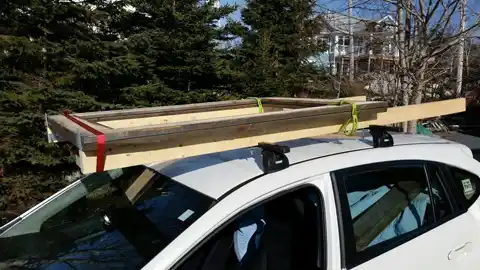
When driving on a trip, you should check a few things regarding plywood on the roof rack again.
NO #1: Check for Loosened Strap
It’s better to have tight straps, but if they do loosen the wood may fall off. If there is a chance that this could happen, then you should tighten them again until it is sufficient.
NO#2: Check Position
If your plywood is not strapped down tightly enough, it can slip over the ends of your rack. When a piece of wood is hanging over the end, it could easily hit anything that goes near it.
Also, the straps may loosen and cause the sheet goods to fall off. You should check your plywood periodically as you drive and make sure that it is not too loose or hanging over the end of your roof rack.
NO#3: Check for Sharp Edges
Plywood can be sharp on the edges, especially near the cut ends of the wood. If you are using straps or bungee cords to tie down the plywood, then it is possible for the tie down itself to get caught on a sharp edge and damage your car.
Which may leave it with an expensive repair bill once you return home. You should check that there are no sharp parts of the wood sticking out before tying the wood to the roof rack.
Remember, always check for a secure attachment before driving away with plywood on your car’s roof rack.
Frequently Asked Questions
There are the most frequently asked questions and answers about how to tie plywood on the roof rack:
1. How Do You Carry A 4×8 Sheet of Plywood?
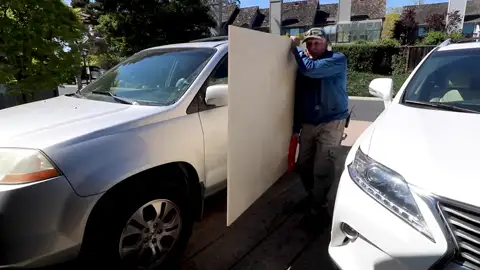
When transporting a large 4×8 sheet of plywood, it can be helpful to use a 12′ rope or tie to secure it to your roof rack.
By tying a loop at each end of the rope, you can easily put the loops over the corners of the plywood. This will help to keep the plywood in place and avoid any accidents.
2. How Do You Tie a Long Board to a Roof Rack?
First, you want to make sure that the board is very secure and tied on all 4 corners. You can use a ratchet strap or a rope with loops at each end to secure it tightly.
The most important thing is having the board or kayak securely attached to all four corners before you start driving because if one corner comes loose from your roof rack, it could become a potential hazard to other drivers as well as your own safety.
3. How Do You Tie Down Lumber on a Roof Rack?
To secure lumber on top of your car’s roof rack, you should use straps with a hook or webbed ratcheting strap. You can tie the loose end to the opposite corner to keep it in place.
You should also make sure that there are no sharp parts of lumber sticking out before you start driving. This is because if your straps get caught on a sharp edge, it could damage your car.
4. Is It Safe to Drive with Plywood on Top of My Car?
Yes, it’s safe to drive with plywood on top of your car. Just make sure that the wood is strapped down securely and you check periodically as you drive for a tight fit.
If you notice that one of the straps has become loose and there are no sharp edges sticking out before driving away, then it should be fine to drive.
5. How Much Does a Sheet of Plywood Weigh?
Plywood is a popular building material because it is strong, lightweight, and relatively inexpensive. Typical full sheet goods of 3/4-inch plywood weigh about 60 pounds each. This may vary depending on the thickness and density of the plywood.
6. How Long Will It Take Me to Tie Plywood to My Roof Rack?
Tying down a full sheet of plywood by yourself will take around 10-20 minutes if you are properly prepared. If you are securing the plywood on top of your roof rack, then it might be best to have another person help you tie it down.
Alternatively, securing the wood underneath the rack will only take a few minutes if you have straps or bungee cords to help you.
Final Words
We hope these tips were helpful for you to learn how to tie plywood to roof rack. Remember, always check your straps or ropes periodically as you drive, and make sure that it is tight before heading down the road.
Also, check for any sharp edges or parts of wood sticking out before driving away because this could become a potential hazard to other drivers.
Do you have any other creative ways to tie plywood on the roof rack? Please share them in the comments below!
Interested to write for this blog? Visit page: Home write for us

